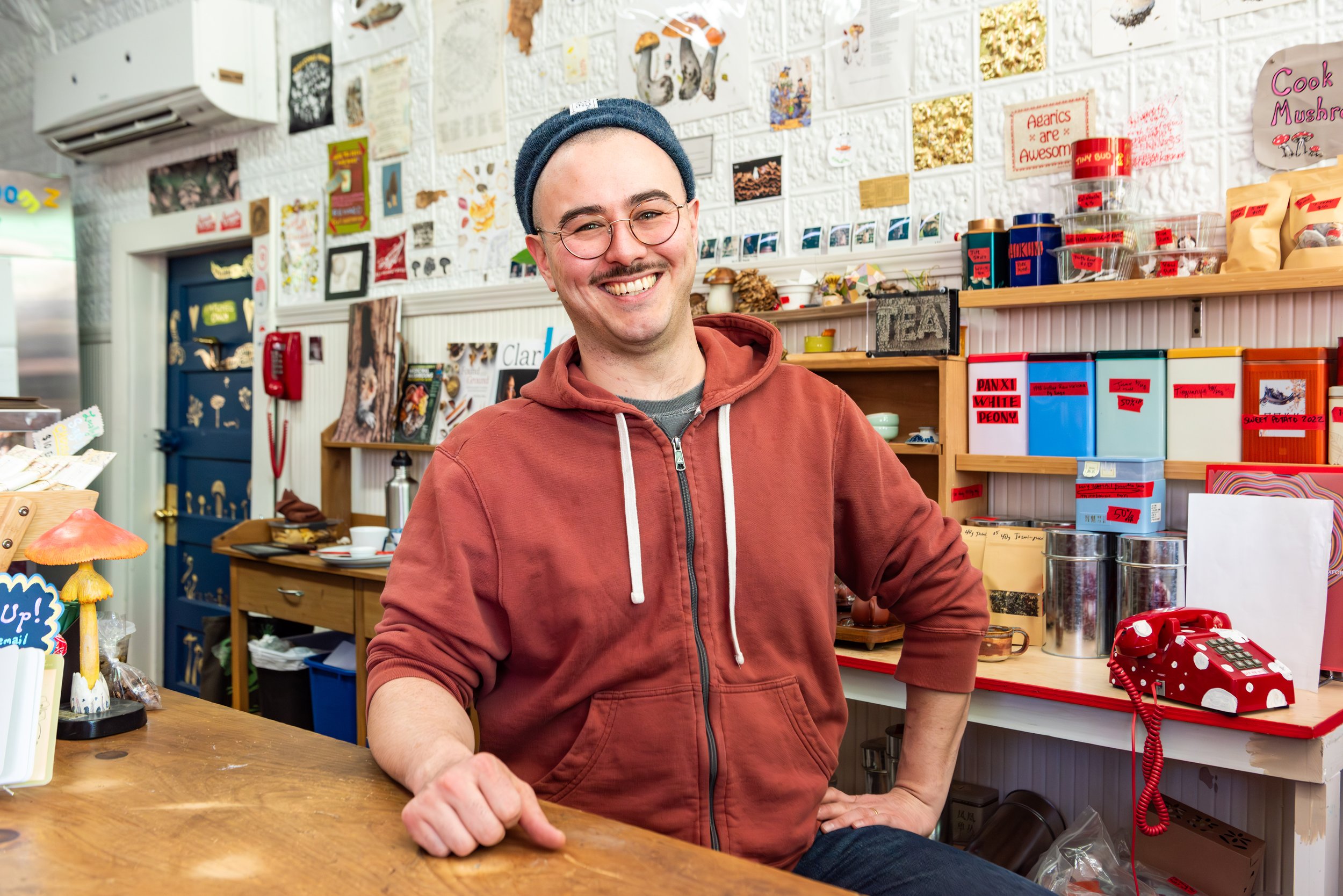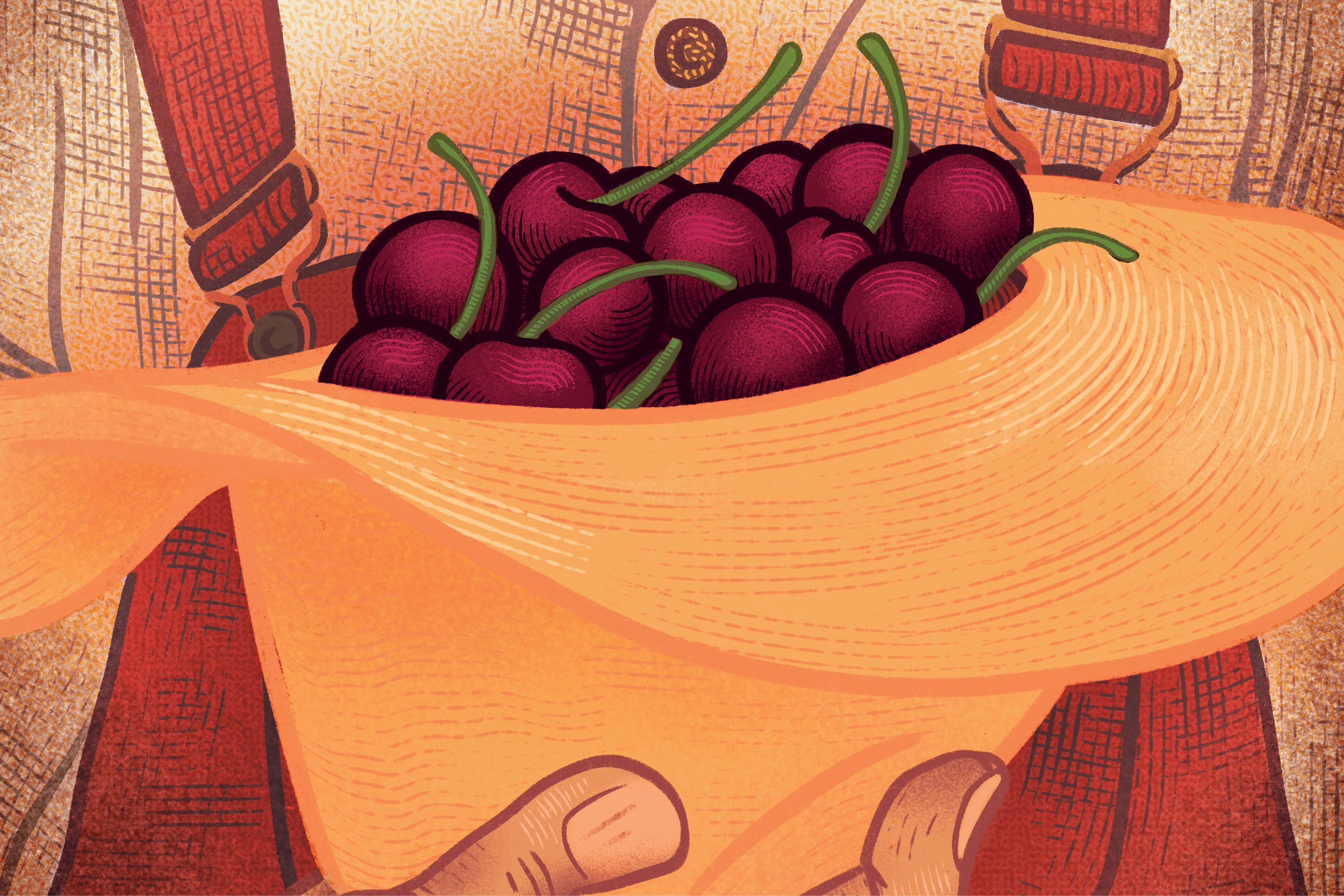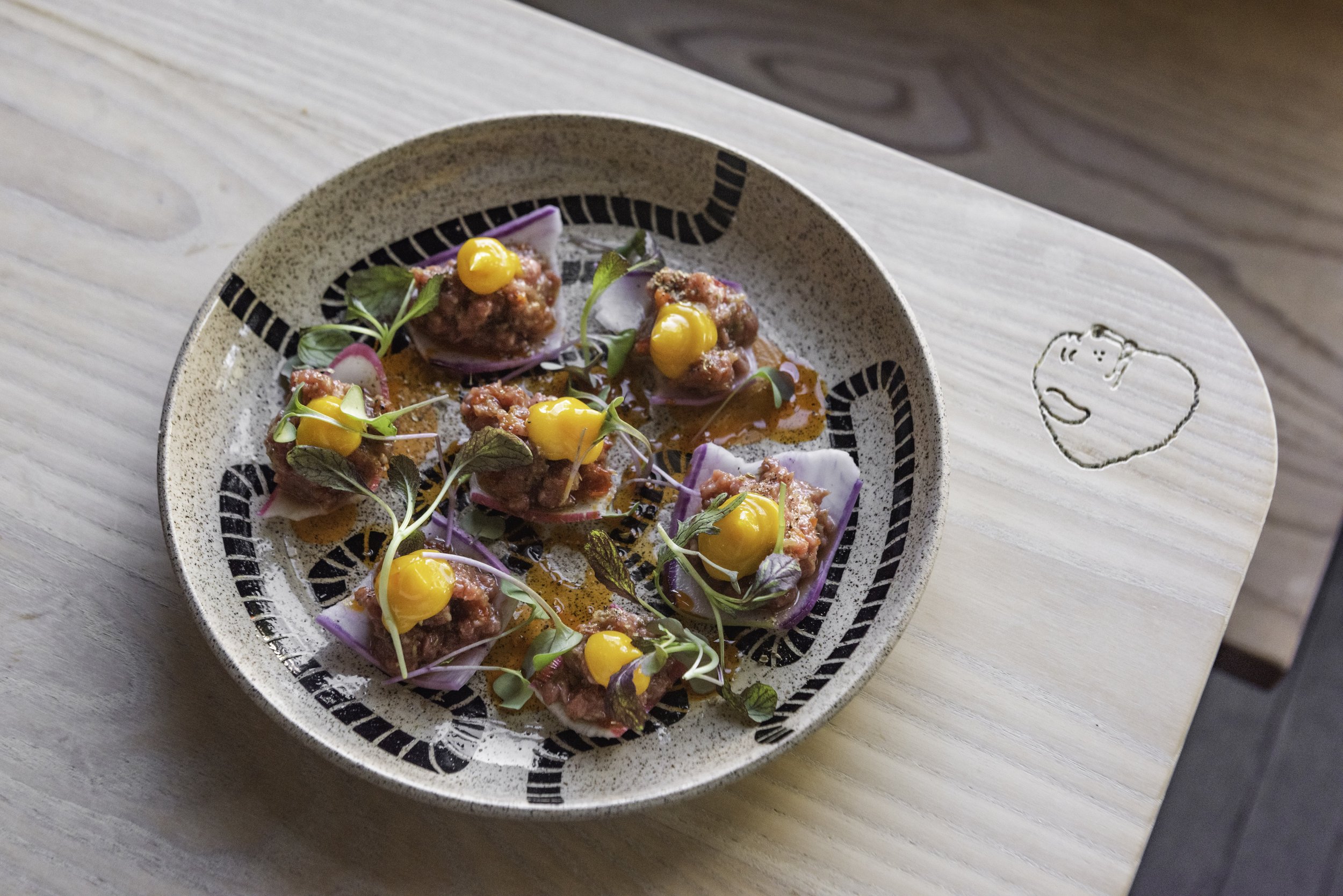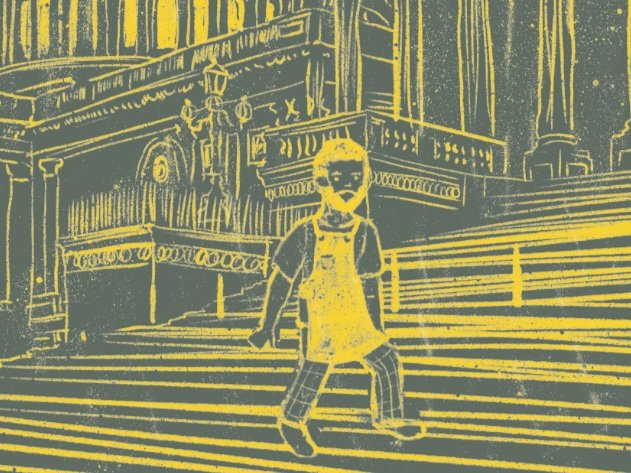Do You Know The Mushroom Man?
At The Mushroom Shop, Tyler Akabane champions fungi and foraging for chefs and home cooks alike.
photo: will blunt
For the past 10 years, Tyler Akabane has been picking wild mushrooms and doling out the finest fungi to Boston’s top restaurants. After working with renowned mushroom hunter Ben Maleson, Akabane has ventured out on his own and opened up The Mushroom Shop in Somerville. The eclectic, charming, mushroom-centered retail store is supplying chefs, businesses, and home cooks with exciting mushrooms, both grown and foraged. Beyond the walls of the store, Akabane is educating the community through foraging trips and classes while the wholesale side of his business supports local chefs and expands the accessibility of flavorful, sustainably sourced mushrooms in Boston. “Mushrooms have been largely overlooked worldwide, but I'm here to share my love of mushrooms and explain why they’re one of nature’s most versatile and surprising ingredients,” says Akabane.
Know Your Mushrooms
Mushrooms are a kingdom of life, just like plants and animals. Up until recent history, they were thought of as plants. In fact, genetically, fungi and animals are very closely related on the tree of life, even more so than plants!
While there are mushrooms that can be cultivated year round, truly wild mushrooms refuse to be tamed, and have highly specialized relationships with trees. These types of mushrooms are called mycorrhizal fungi, and they make up some of the most delicious, diverse, and highly sought-after seasonal foods—porcini, matsutake, chanterelles, black trumpets, and honey mushrooms just to name a few. These morsels are so delicious and rare that they fetch high prices on the market, and those who have good foraging spots rarely share them, even with the closest of friends.
In fact, rather than the terroir affecting the mushroom’s flavor, it's the species of mushroom that calls the shots. For example, there are over 40 types of chanterelles in the United States, but each species and variation grows with its own specific partner. This differentiation of species affects the mushroom’s size, season, texture, flavor, and nuances in aroma. My favorite variety grows in Saskatchewan. They're smaller and super fragrant (like apricots). In the Mendocino area, there are huge, one-plus-pound chanterelles (absolute monsters) that grow deep in the mud and are incredibly meaty.
The same goes for black trumpets and especially porcini, which come in dozens of varieties. Summer porcini prefer oak trees and are sweet in flavor, while in the fall, they prefer spruce and hemlock. They are more closely related to the European varieties and are much earthier.
Each species of mushroom has its own specific qualities and its own growing habits. Recently, some cool research has come to light showing that oyster mushrooms can be used in bioremediation. If grown on waste products, they can be employed in decomposing waste, or reusing waste from the food system. Oyster mushrooms can also grow on used coffee grounds or used beer grains. So, in a world without health inspectors, coffee shops and beer breweries could send their spent beans and grains to be sterilized and inoculated, which in turn could grow edible mushrooms—turning waste into food!
Know Your Forager
Make sure your forager harvests responsibly! In the fall, we get a lot of hen of the woods in our area. I see them growing alongside busy roads one day, and then chopped off the next. If a forager was not wise or respectful, they could easily sell them to unsuspecting restaurants under the premise that they were from the woods. Mushrooms can absorb toxins and heavy metals from the soil and anything in the water, even car fluids.
Of course, your forager should also know their stuff. I’ve seen novice foragers leaving dirty stems on their mushrooms, or harvesting past prime. I’ve also seen people bring chefs mushrooms that were not what they requested. Berkeley's polypore is technically an edible mushroom, but it's not very flavorful and difficult to cook. I saw it in a dumpster after a chef said it was given to them as a hen of the woods. I recommend doing some research on your forager and looking into their other restaurants and clients.






